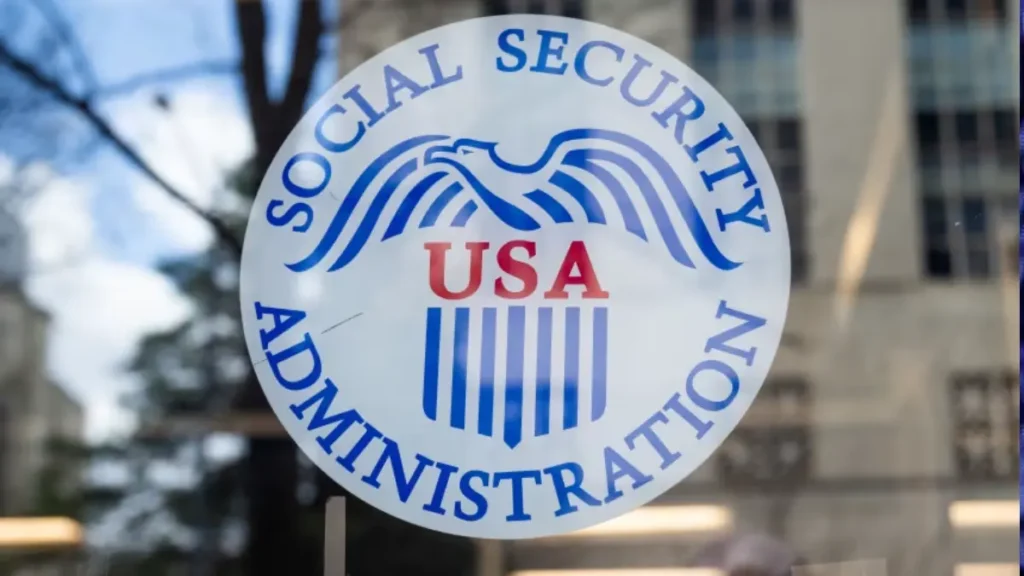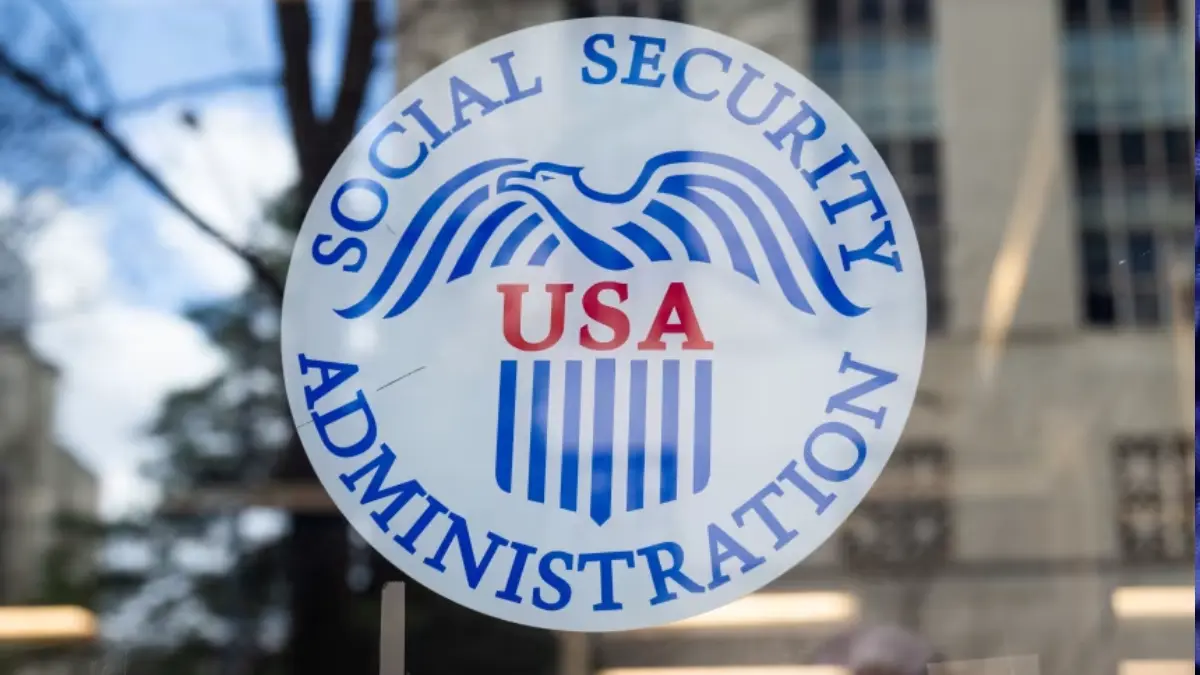The Social Security Administration announced a 2.8% cost-of-living adjustment for 2026. Learn what this means for retirees, how the COLA is calculated, and how inflation trends affect Social Security benefits 2026.
Social Security Benefits 2026: What the 2.8% Increase Means for Retirees

The Social Security benefits 2026 adjustment has finally been confirmed, and it’s bringing a modest relief to millions of American retirees. The Social Security Administration (SSA) announced that monthly payments will rise by 2.8% starting in January 2026, reflecting the annual cost-of-living adjustment (COLA) based on inflation data from the third quarter of 2025.
While this marks an improvement from 2025’s 2.5% COLA, many seniors argue that the increase still falls short of covering the growing costs of essentials like housing, medical care, and groceries.
📊 How the 2026 COLA Was Calculated
The cost-of-living adjustment is derived from the Consumer Price Index for Urban Wage Earners and Clerical Workers (CPI-W), published by the Bureau of Labor Statistics (BLS). The SSA compares the average CPI-W from July through September of one year with the same period the previous year to determine the annual increase.
| Year | COLA (%) | Average Monthly Benefit | Inflation Context |
|---|---|---|---|
| 2023 | 8.7% | $1,827 | High inflation peak |
| 2024 | 3.2% | $1,848 | Inflation moderates |
| 2025 | 2.5% | $1,870 | Stable CPI growth |
| 2026 | 2.8% | $1,922 (estimated) | Controlled inflation |
This 2.8% COLA is tied to recent inflation readings showing that the U.S. inflation rate hit 3.0% in September 2025, slightly below expectations. That moderation has helped stabilize consumer prices but limits how much benefits increase year to year.
🧮 How Much More Will Retirees Receive?
For the Social Security benefits 2026 cycle, the average retired worker will see an increase of roughly $52 per month, bringing the typical benefit to about $1,922.
| Category | 2025 Average Monthly Benefit | 2026 Estimated Monthly Benefit | Monthly Increase |
|---|---|---|---|
| Retired Worker | $1,870 | $1,922 | +$52 |
| Aged Couple (Both Receiving) | $3,055 | $3,141 | +$86 |
| Disabled Worker | $1,486 | $1,528 | +$42 |
| Widowed Parent with Two Children | $3,500 | $3,598 | +$98 |
These numbers provide modest relief, but as inflation continues to affect household budgets, many older Americans say the increase is not enough to offset rising medical premiums, housing costs, and food prices.
🏠 Why a 2.8% Increase May Not Be Enough
Although the Social Security benefits 2026 raise is higher than 2025’s 2.5% increase, many seniors still feel squeezed. The Senior Citizens League, a nonpartisan advocacy group, notes that retirees have lost more than 30% of their buying power since 2000.
Housing costs have continued to climb — shelter inflation rose 3.6% year-over-year as of September 2025 — while Medicare Part B premiums are also expected to increase in 2026. This combination erodes much of the COLA’s impact before it even reaches retirees’ pockets.
💰 COLA Trends: A Look Back at the Past Decade
| Year | COLA | Inflation Trend | Remarks |
|---|---|---|---|
| 2016 | 0.0% | Low inflation | No adjustment made |
| 2020 | 1.6% | Stable economy | Pre-pandemic |
| 2021 | 1.3% | Recovery phase | Early rebound |
| 2022 | 5.9% | High inflation | Pandemic supply shocks |
| 2023 | 8.7% | Four-decade high | Record increase |
| 2024 | 3.2% | Cooling trend | Fed intervention |
| 2025 | 2.5% | Stable CPI | Moderate |
| 2026 | 2.8% | Controlled inflation | Gradual stability |
These fluctuations show how closely the Social Security benefits 2026 adjustment tracks the U.S. inflation cycle. The spike in 2022–2023 followed pandemic disruptions, while more modest adjustments since 2024 indicate a return to economic balance.
🧓 The Inflation Impact on Retirees
Even with inflation easing, seniors continue to face persistent challenges in maintaining their standard of living. Essential expenses like medical care, rent, and energy costs often rise faster than the CPI-W index used to calculate COLA.
For example, while food prices rose 3.1% and energy 2.8% over the past year, medical services saw a sharper 4.5% increase. These categories disproportionately affect retirees, meaning the 2.8% boost may not keep pace with their real-world costs.
🏛️ SSA Announcement and Shutdown Delay
The Social Security Administration officially announced the COLA increase after a brief delay caused by the federal government shutdown in October 2025. The data, derived from the BLS inflation report, was crucial not just for retirees but also for other federal programs like veterans’ benefits and Supplemental Security Income (SSI).
Despite administrative delays, the SSA confirmed that the Social Security benefits 2026 adjustment will be automatically reflected in January checks.
📉 How Inflation Metrics Shape COLA Calculations
The CPI-W measures price changes for urban wage earners — a demographic that doesn’t fully represent retirees’ expenses. Many experts argue for adopting a Consumer Price Index for the Elderly (CPI-E) instead, which places greater weight on healthcare and housing costs.
If the CPI-E were used, the Social Security benefits 2026 increase might have been closer to 3.4%, reflecting seniors’ real cost pressures.
⚖️ Economic Context: Inflation and the Federal Reserve
The Social Security benefits 2026 announcement comes shortly after the Federal Reserve signaled potential interest rate cuts amid slowing inflation. The central bank’s cautious stance under Chair Jerome Powell has stabilized prices without triggering recession — a “soft landing” economists have long anticipated.
However, concerns linger that renewed Trump administration tariffs could drive another wave of price increases, impacting future COLA adjustments.
🧭 Retirement Planning and Fixed-Income Strategies
For retirees, understanding how Social Security benefits 2026 interact with other income sources is key. Financial advisors recommend balancing benefits with 401(k) distributions, pension income, and investment returns to hedge against inflation risk.
Some strategies include:
- Delaying Social Security claims to maximize benefits.
- Diversifying savings into inflation-protected assets.
- Monitoring Medicare premium increases that may offset COLA gains.
These proactive steps can help seniors preserve purchasing power even as annual adjustments remain modest.
🗳️ Political Reactions and Policy Debates
The modest Social Security benefits 2026 increase has reignited debates in Washington about the program’s sustainability. Lawmakers from both parties have proposed measures to strengthen Social Security’s long-term solvency, including:
- Adjusting the payroll tax cap to cover higher earners.
- Gradually raising the retirement age.
- Expanding COLA formulas for lower-income recipients.
However, with the 2026 elections approaching, major reform remains unlikely in the short term.
❓ FAQs About Social Security Benefits 2026
1. How much will Social Security benefits increase in 2026?
The Social Security benefits 2026 increase is 2.8%, effective January 2026.
2. How is the COLA calculated?
It’s based on the CPI-W index, comparing average prices from July–September of 2025 to the same period in 2024.
3. Will the increase cover rising living costs?
Not entirely. While helpful, the 2.8% boost may not fully offset rising medical and housing expenses.
4. When will beneficiaries see the change?
The higher payments will appear in January 2026 checks for all Social Security recipients.
5. Could next year’s COLA be higher?
That depends on 2026 inflation trends. If inflation rises again, the 2027 COLA could be larger.
🧾 Conclusion
The Social Security benefits 2026 adjustment offers modest relief at a time of relative economic calm. With inflation easing and interest rates stabilizing, retirees can expect steady — though not dramatic — improvement in their monthly checks.
However, the gap between official COLA adjustments and seniors’ actual living costs remains a serious concern. As policymakers debate long-term reforms and the Federal Reserve navigates inflation control, ensuring financial security for older Americans will continue to be a defining issue in the years ahead.

